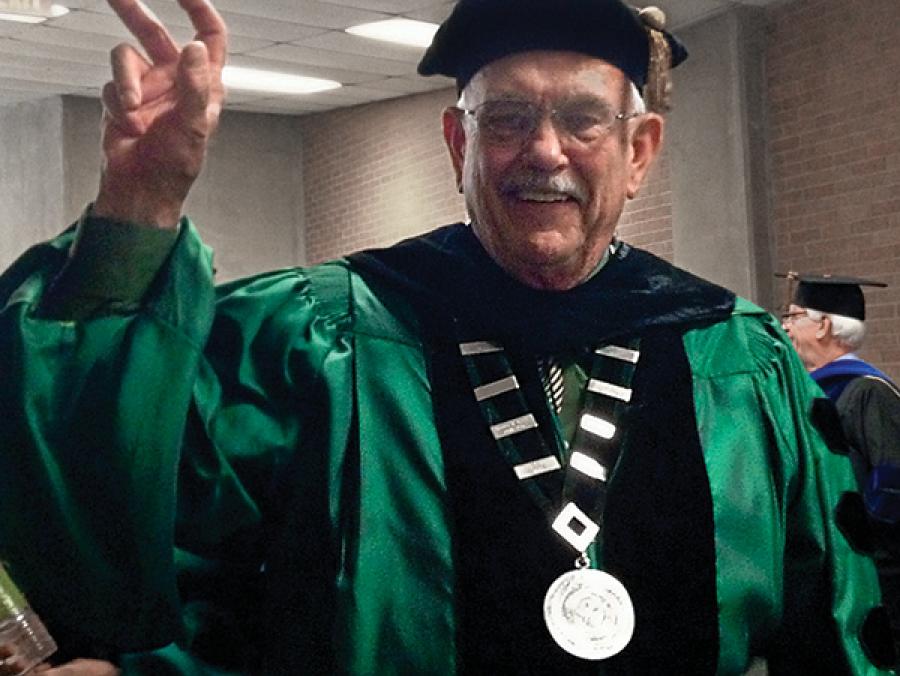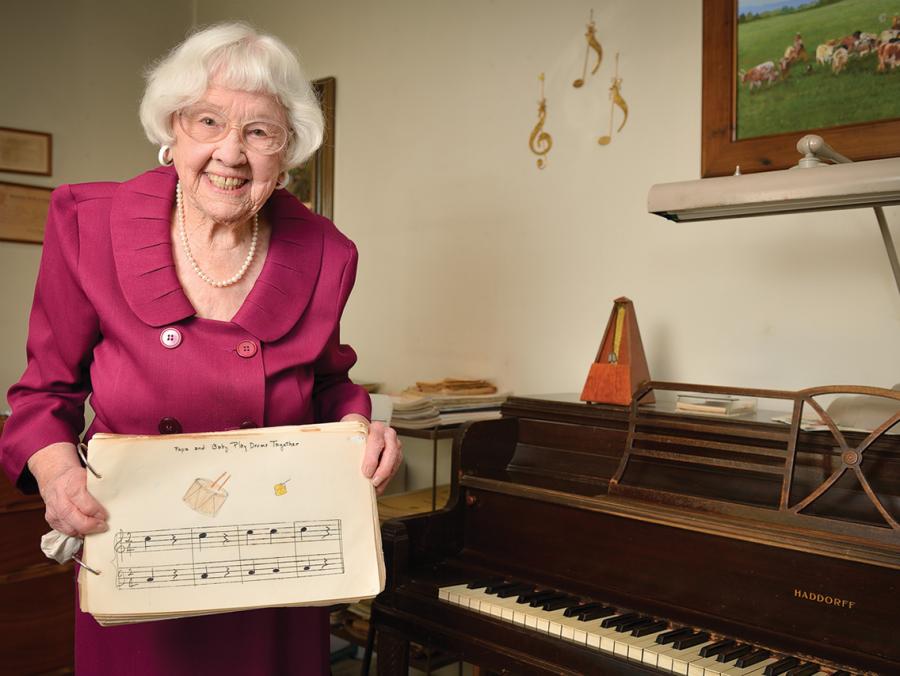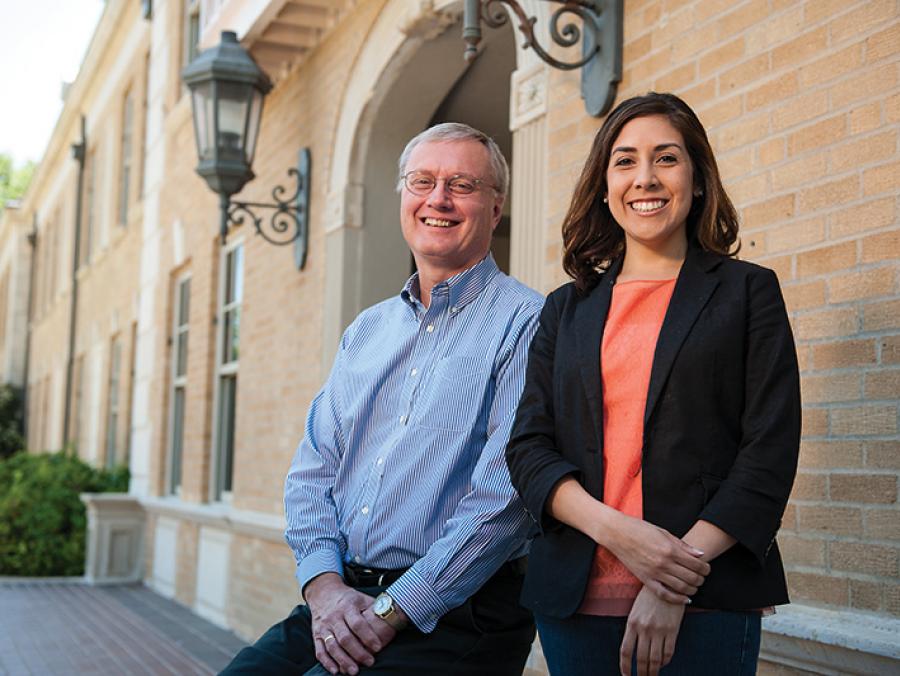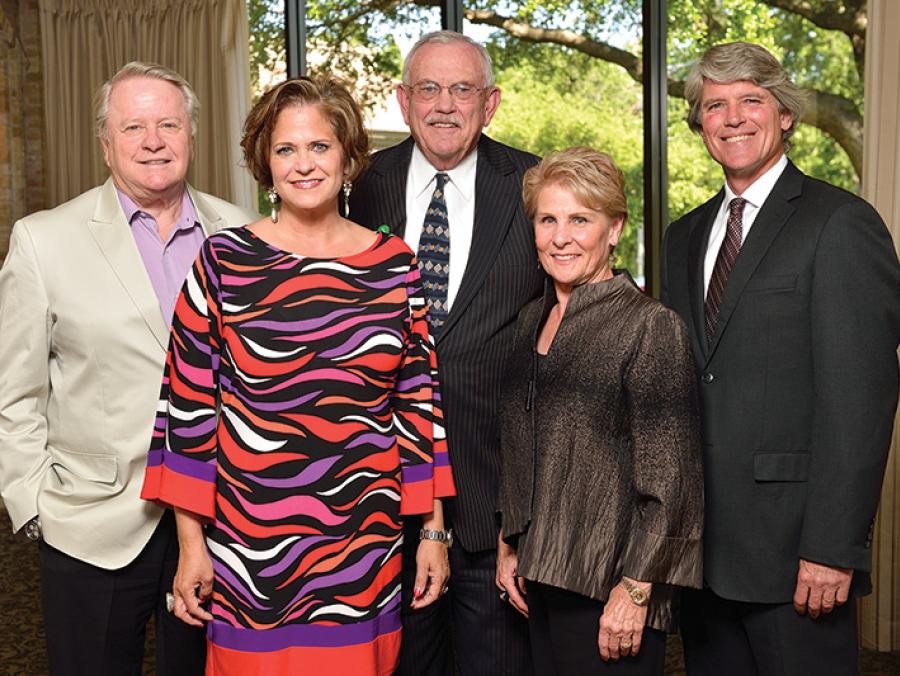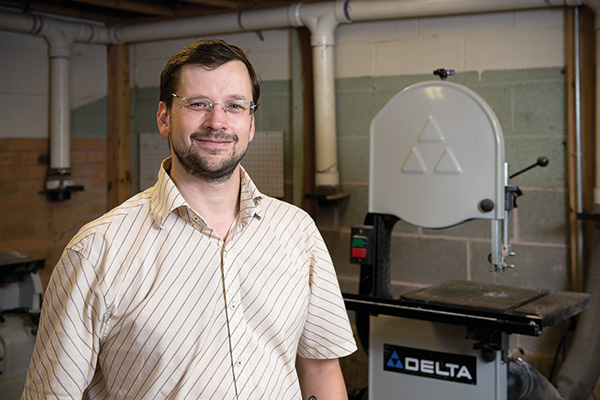 James Thurman can turn an atlas into a dinner plate.
James Thurman can turn an atlas into a dinner plate.
He can transform a stack of office paper into a bangle bracelet.
He can make a necklace out of a novel.
How does he do it?
With Thurmanite.
Thurman, assistant professor in the University of North Texas College of Visual Arts and Design, makes plates, bowls, glasses, pendants, bracelets and other artistic works out of a material that he describes as similar to "plasticized wood." Made of paper and epoxy resin, the hard, plastic-like material resembles the grain of wood with its layers of colors. And this year, that material was officially trademarked as Thurmanite.
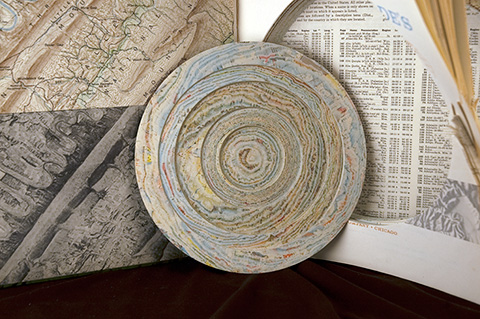 He began using the name in 2009 – yes, partly as a joke – and also as a play off the name Fordite, a material made from layers of automotive enamel, he said. But the trademark serves the useful purpose of identifying the material around the world. He has traveled to Turkey, Japan and around the U.S. to teach people how to make Thurmanite. Locally, members of the Golden Triangle Woodturners in Denton have learned how to make Thurmanite. And he just returned from conducting a four-day jewelry-making workshop at an arts center called The Glass Furnace in Turkey, where he taught everyone from college students to professionals.
He began using the name in 2009 – yes, partly as a joke – and also as a play off the name Fordite, a material made from layers of automotive enamel, he said. But the trademark serves the useful purpose of identifying the material around the world. He has traveled to Turkey, Japan and around the U.S. to teach people how to make Thurmanite. Locally, members of the Golden Triangle Woodturners in Denton have learned how to make Thurmanite. And he just returned from conducting a four-day jewelry-making workshop at an arts center called The Glass Furnace in Turkey, where he taught everyone from college students to professionals.
"Trademarking is not something typical you would do in the arts," he said. "You see large major brands trademarking names. But it's one of the benefits of being affiliated with a larger institution, and as a university researcher myself, it's a natural outgrowth of what we do."
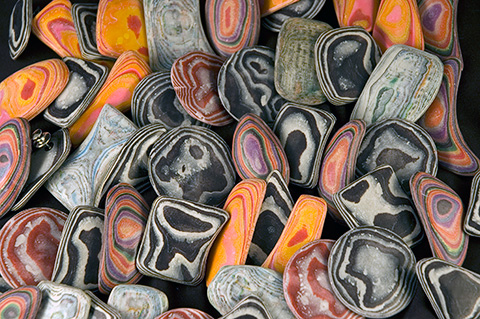 How does he make Thurmanite? Using a bandsaw, he cuts books or stacks of paper into circles or other shapes. Then using epoxy resin, he individually glues each piece of paper together. One plate, for instance, can be made of 172 pages. Once the paper dries into a hard material like a block of wood, he uses a tool called a wood lathe to shape the material into a plate, bowl, necklace, pebble or other object. As he works, curls of Thurmanite fly from the lathe through the air – much like curls of wood – and the grain-like patterns of the stacked papers appear. He then sands the piece, turning it as smooth as a well-worn stone. In an hour, he can make about 10 "pebbles" – small, rock-like objects that can be used on necklaces or in other art pieces -- or he can spend about 50 hours on an involved project.
How does he make Thurmanite? Using a bandsaw, he cuts books or stacks of paper into circles or other shapes. Then using epoxy resin, he individually glues each piece of paper together. One plate, for instance, can be made of 172 pages. Once the paper dries into a hard material like a block of wood, he uses a tool called a wood lathe to shape the material into a plate, bowl, necklace, pebble or other object. As he works, curls of Thurmanite fly from the lathe through the air – much like curls of wood – and the grain-like patterns of the stacked papers appear. He then sands the piece, turning it as smooth as a well-worn stone. In an hour, he can make about 10 "pebbles" – small, rock-like objects that can be used on necklaces or in other art pieces -- or he can spend about 50 hours on an involved project.
Look closely, and you might be able to read the cities of Virginia on a pebble made from an atlas or see the swirling colors of the ocean. Musicians have asked him to make keepsakes from their music practice books, and authors have asked him to create Thurmanite from their written works.
His favorites are the maps – holding layers of meaning in their pages.
"Think of your life like layers of experience, and think of a map as one experience," he said. "Layer all those maps, and they become a composite of your life experience."
A demonstration of how Thurmantie is made and used to create a plate and bracelet. >>





